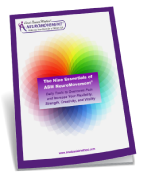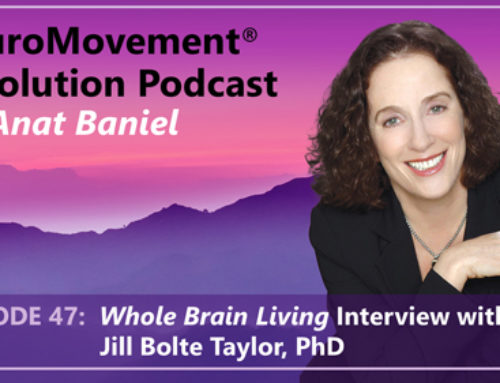A Fine Balance – Exercise to Regain Your Balance: What Doctors Don’t Tell You
Fourth Article in a Whole Body Fitness Series by Anat Baniel
I have been writing a series of articles for the magazine What Doctors Don’t Tell You. Following are highlights from the fourth article in this whole body fitness series. If you want to read the previous articles, which were published in the May, June, and July 2016 issues in the UK, click on the following links:
May 2106 – Easing Into Fitness
June 2016 – Powering Up the Middle
July 2016 – Dynamic Sitting
Below are some highlights and a link to the full article: A Fine Balance – Exercise to Regain Your Balance (how to recover the art of maintaining control).
 There are also three NeuroMovement® lessons in the article that I encourage you to try!
There are also three NeuroMovement® lessons in the article that I encourage you to try!
The greatest cause of hip fractures and other injuries as you age is loss of the ability to balance.
It takes a child six years to be able to balance on one leg for up to 10 seconds, hop on one foot, albeit clumsily, or learn how to ride a bike without training wheels. It takes a lot longer to master standing on one leg with the other leg pointing behind and lifted high in the air (called an ‘arabesque’ in ballet), or to be able to twist and swivel while pitching a baseball.
To have good balance, what the Merriam Webster Dictionary defines as “the ability to move or to remain in a position without losing control or falling,” requires a lengthy process, during which the brain learns to control the different parts of the body, the timing of each movement, and its relationship to the rest of the body. In other words, balance is not a ‘thing’—there’s nowhere that a ‘balance’ can be found.
What we call ‘balance’ is the successful outcome of continuous, highly dynamic, and complex brain activity.
We all have had to learn how to move our bodies in space, and how to maintain balance throughout the trajectory of any movement that we’re performing, to successfully fulfill what we set out to do each time we want to move. That’s true for seemingly simple actions like reaching for a glass of water to more challenging actions, like walking along a steep narrow trail, rollerblading, or carrying a tray loaded with champagne-filled flutes.
Our bodies are built such as to almost fall at all times when we’re upright. We have a narrow base, a high center of gravity, and a heavy head at the top. The good news is that it makes initiating any movement very easy and allows us great freedom to move in all directions with a remarkable number of variations.
On the other hand, the brain has the enormous task of constantly making sure we don’t lose balance as we move.
Increased susceptibility to falling is one of the most serious problems associated with aging. Approximately 1/3 of people aged 65 years and over in America fall at least once a year, with up to 1/5 of them suffering multiple falls.
Poor balance is the cause of the majority of falls in older adults, and falls are the leading cause of injury-related death and hospitalization in people aged 65 years and over.
How to Improve Balance
The good news is that the common deterioration is reversible, and even those who are athletic and have good balance can become even better. At any age and under the right conditions, the brain can restructure itself and change for the better—with what is called neuroplasticity.
The three NeuroMovement® lessons in this article can provide your brain with the conditions and information it needs to improve your balancing skills and begin reversing, right away, any deterioration you may already have.
Note: For the best outcomes, make sure to do the movements slowly and gently, with as little force as possible,and pay close attention to what you feel as you move.
Click Here to read the full article A Fine Balance – Exercise to Regain Your Balance in What Doctors Don’t Tell You.
What Doctors Don’t Tell You
What Doctors Don’t Tell You (WDDTY) is a monthly magazine which publishes the latest healthcare news, alongside information on complementary therapies and alternative medicines, with a host of features and stories written by leading experts and our highly-respected regular contributors.
WDDTY began as a newsletter, with the first issue being published at the end of 1989 by best-selling author Lynne McTaggart and her husband, former Financial Times journalist Bryan Hubbard. Since then, it has gone from strength-to-strength thanks to our ever-growing number of passionate fans, and is now the largest magazine of its kind in the UK, sold in 14 countries worldwide (including the US).
Learn More about What Doctors Don’t Tell You: www.wddty.com.
I’d love to hear about your experiences with the NeuroMovement® lessons in this series. Please join our conversation on Facebook at www.facebook.com/anatbanielmethod.








